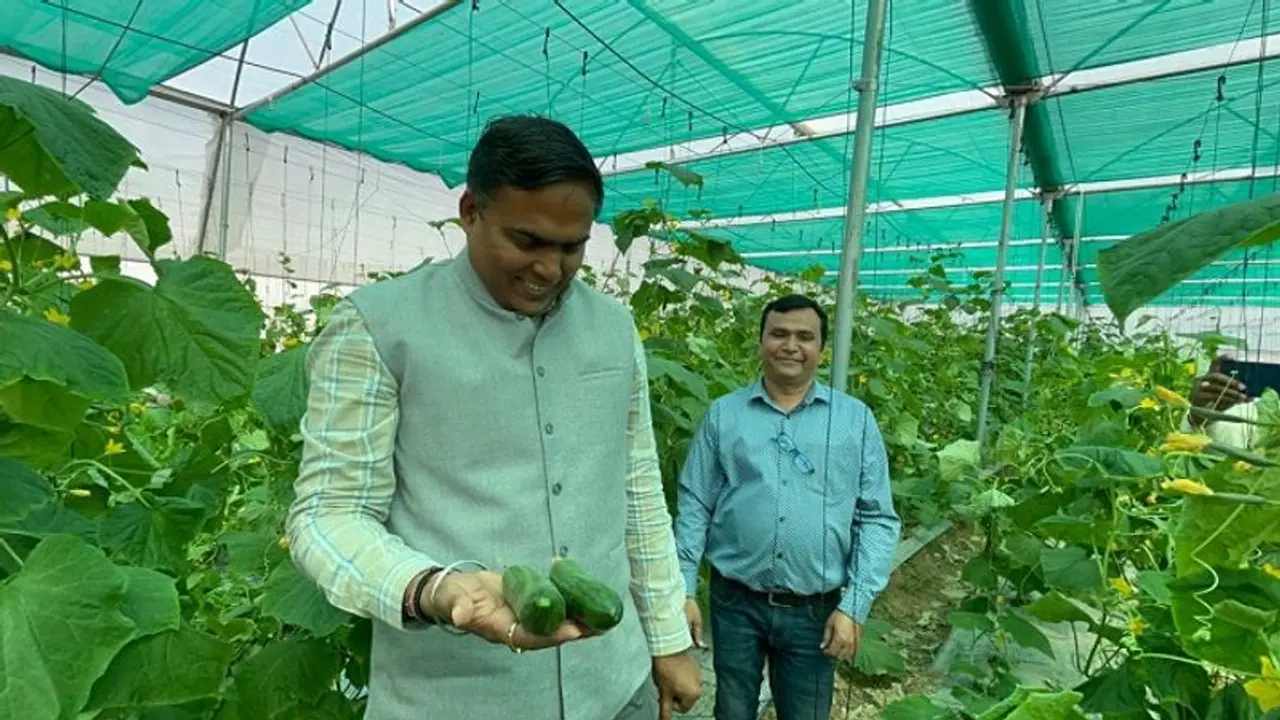In March 2022, Kamlesh Mishra set up a polyhouse structure at a cost of Rs 43 lakh. He received a subsidy of Rs 20 lakh from the UP government. Initially, he cultivated cucumber and capsicum in the polyhouse. For vegetable farming, he invested around Rs 5 lakh and generated a revenue of Rs 30 lakh last year.
Deoria: Farming requires dedicated effort and perseverance to stay consistent with the endeavours. When Kamlesh Mishra decided to pursue farming, he faced discouragement from others. His family members, relatives, and neighbours questioned his decision. Post his graduation, he had worked in various companies. He found his desk jobs limiting and wished to venture into agriculture. Following his passion, he established a polyhouse spanning one acre of land and began cultivating capsicums and seedless cucumber crops. Initially, his investment of Rs 5 lakh helped him earn Rs 30 lakh in a year.
Polyhouse farming
Kamlesh learned about polyhouse farming after doing his research online. He discovered that this technique allows for the production of off-season vegetables. He was determined to implement this idea to make his business profitable. He visited the villages in Rajasthan and Uttar Pradesh to learn more about polyhouse farming.
Getting inspired
During his journey, Kamlesh discovered that this farming technique first originated in Israel and then travelled to Rajasthan in India. He visited Gurha Kumawatan, a village renowned for polyhouse farming in Rajasthan. There, he interacted with local farmers who had 20 polyhouses on their lands. He also met with farmers in Madhya Pradesh and Western Uttar Pradesh to gain more knowledge. Then, he reached out to the district horticulture department office for support.
The beginnings
In March 2022, Kamlesh set up a polyhouse structure at a cost of Rs 43 lakh. He received a subsidy of Rs 20 lakh from the UP government. Initially, he cultivated cucumber and capsicum in the polyhouse. For vegetable farming, he invested around Rs 5 lakh and generated a revenue of Rs 30 lakh last year. Three cucumber crops and one crop of capsicum are harvested annually within the polyhouse. Notably, he sells the production directly from his polyhouse and the need to travel to the markets is eliminated.
Farming methods
Kamlesh Mishra has employed cutting-edge farming methods in his farm including drip irrigation, sprinklers, and foggers. He uses the mulch technique to grow cucumbers. These methods eliminate the need for weeding. Today, farmers from different cities come to visit his farm. Kamlesh actively encourages other farmers to adopt polyhouse farming.
Polyhouse structures
In polyhouse structures, climatic conditions remain controlled. It is entirely covered, protecting the crop from adverse weather such as hailstorms, heavy rain, and extreme heat. Kamlesh uses cow urine, turmeric, neem, and vermicompost in his field. He also uses naturally derived sprays to protect the crops from insects. During the season of harvesting, the number of labourers increase to ensure crop maintenance.
